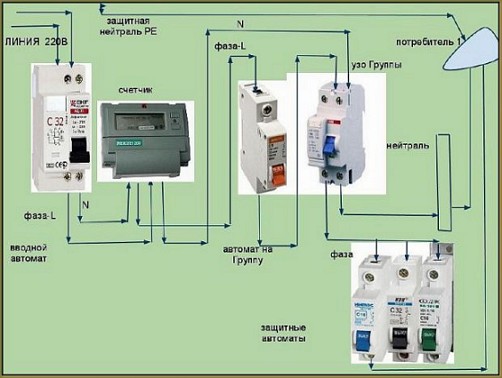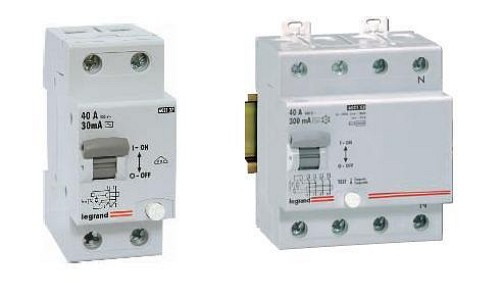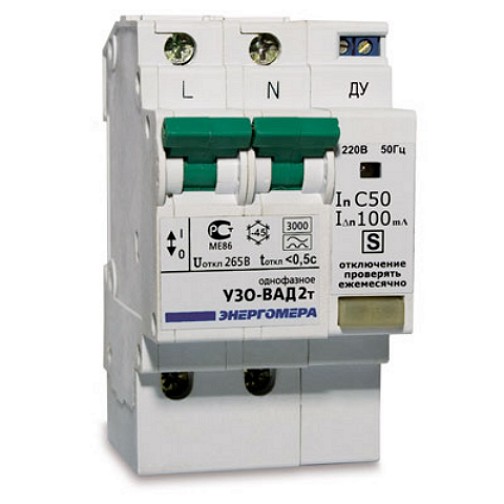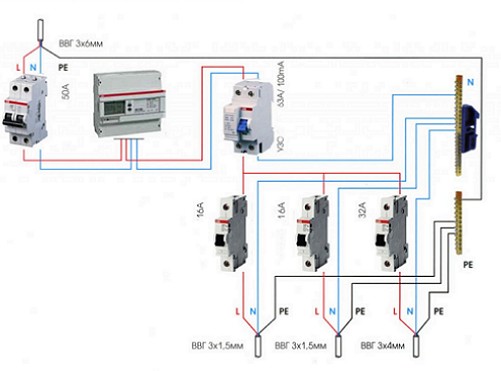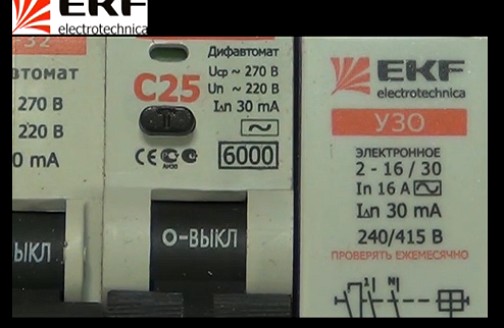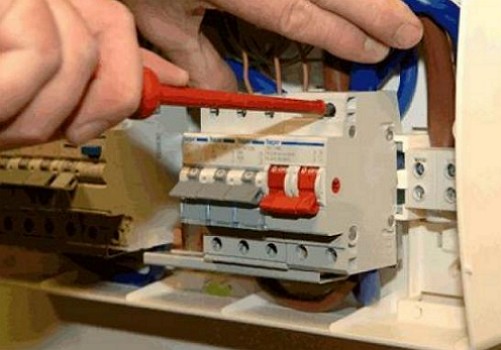The role of electrical safety of living quarters is fundamental when creating comfortable conditions. To protect a person from electric shock, household electrical appliances and wiring from the possibility of fire in extreme situations, a protective shutdown device helps. What is an RCD and how to connect it yourself?
Content
Introduction to the protective shutdown device
The RCD is a switching device. When the differential current exceeds the set value, the device causes the contacts to open. By its technical parameters, purpose and functionality, there are a large number of devices. What do I need to know and how to choose the RCD device for the apartment?
Criteria for selecting RCDs
The selection of the protective device must be carried out according to the following criteria:
• operational operating parameters
• Reliability
• Quality.
The operating parameters of the device include: rated current and rated voltage, tripping differential current, conditional short circuit current Inc.
Operating performance parameters are selected based on the technical data of the electrical installation or wiring.
For the electric power consumer, a conditional short-circuit current is of particular interest. This is a characteristic that determines the reliability and strength of the device, and, of course, the quality of electrical connections and the execution of consumer equipment. The state standard establishes resistance to short-circuit currents, therefore the minimum allowable value Inc is 3 kA. In European countries it is not allowed to operate an RCD with an Inc that is less than 6 kA. Qualitative RCD devices have an indicator of 10 kA.
The principle of the device and its design
The principle of the RCD is based on physical excitation of the electromotive force in the windings of the current transformer. Structurally, the RCD device is a ferromagnetic core with three windings. There are primary and secondary windings of the core. The role of primary current windings ("phase" and "zero") is the guidance of oppositely directed continuous magnetic fluxes in the ferromagnetic core.
In this case, the primary winding is connected to the phase conductor, and the secondary winding to the neutral conductor. The third winding is connected to the starting relay. In the absence of leakage current, the total value and power of the streams in the circuit is zero. Any occurrence in the asymmetry system, which is characterized by the appearance of a leakage current in the wiring, "provokes" the emergence of EMF. The appearance of the EMF triggers a relay, monitoring the state and opening of the "phase" and "zero". The operability of the device depends on the components of the trigger organ and varies by device:
• electromechanical
• electronic
The design of the device differs by the type of the protected electrical circuit. Depending on the circuit, the RCDs are used:
• Two-pole devices (for single-phase supply)
• four-pole (for three-phase supply).
A distinctive feature is the presence of contact pairs.
The two-pole device has two pairs of contacts that open two lines. The four-pole device has four pairs of contacts that can break if there is a leakage current of up to four lines.
What is an RCD, the basic wiring and the principle of operation are presented in the video. Having studied the general principle of operation, as well as the design, it is possible to make the right choice of the RCD.
Types of RCDs
Existing circuits connecting the device is enough. It is necessary to distinguish the connection schemes of the RCD: single-phase and three-phase. The single-phase device is applied to household electrical equipment with load currents of 63 A, while a single-phase RCD has the ability to disable the differential current and load current. An example of a common single-phase device is the RCD-VAD 2.
The main parameters of a device of this type are considered to be two poles with a rated breaking capacity of 3000A. the device provides switching-off of the equipment at an alternating sinusoidal and constant pulsating differential current.
Single-phase connection scheme has a number of features:
• allows the connection of aluminum and copper conductors
• do not lose sensitivity when re-grounding
• Limits switching impulse voltages to 2000V level.
The circuit of the three-phase RCD is identical to that of the single-phase circuit. The essential difference is only in the passage of the core window by conductors. In a three-phase device of conductors four: one zero and three phase. The characteristic housing of the three-phase device can not be confused. The body of the device has four terminals and a clamp.
You do not know how to distinguish the RCD from the diff machine? The proposed video in a simple form will tell you about the markings on the case and the types of devices.
How to connect the device yourself
As practice shows, the RCD is recommended to choose one stage more powerful than the already connected automata. This will ensure the reliability and durability of the device. The best option for connecting the RCD is to provide connectivity to professionals. If you feel confident and have a good level of knowledge in electrical engineering, then you can connect the device yourself.
Favorable from the point of view of the installation of electrical equipment is the maximum location of the RCD to the point of entry. In the apartment the device is installed immediately after the electricity meter. This is due to the regulated permanent monitoring of the maintenance of electricity consumers. If there is no special protective PE ground wire in the floor panel, it is necessary to make a three-wire wiring.
A complex wiring diagram can increase the natural leakage current and exceed the permissible (30 mA). In this case, false alarms are possible. Calculate the load on the two RCDs and install the two devices.
Secrets of connecting the RCDs from professional electricians.



